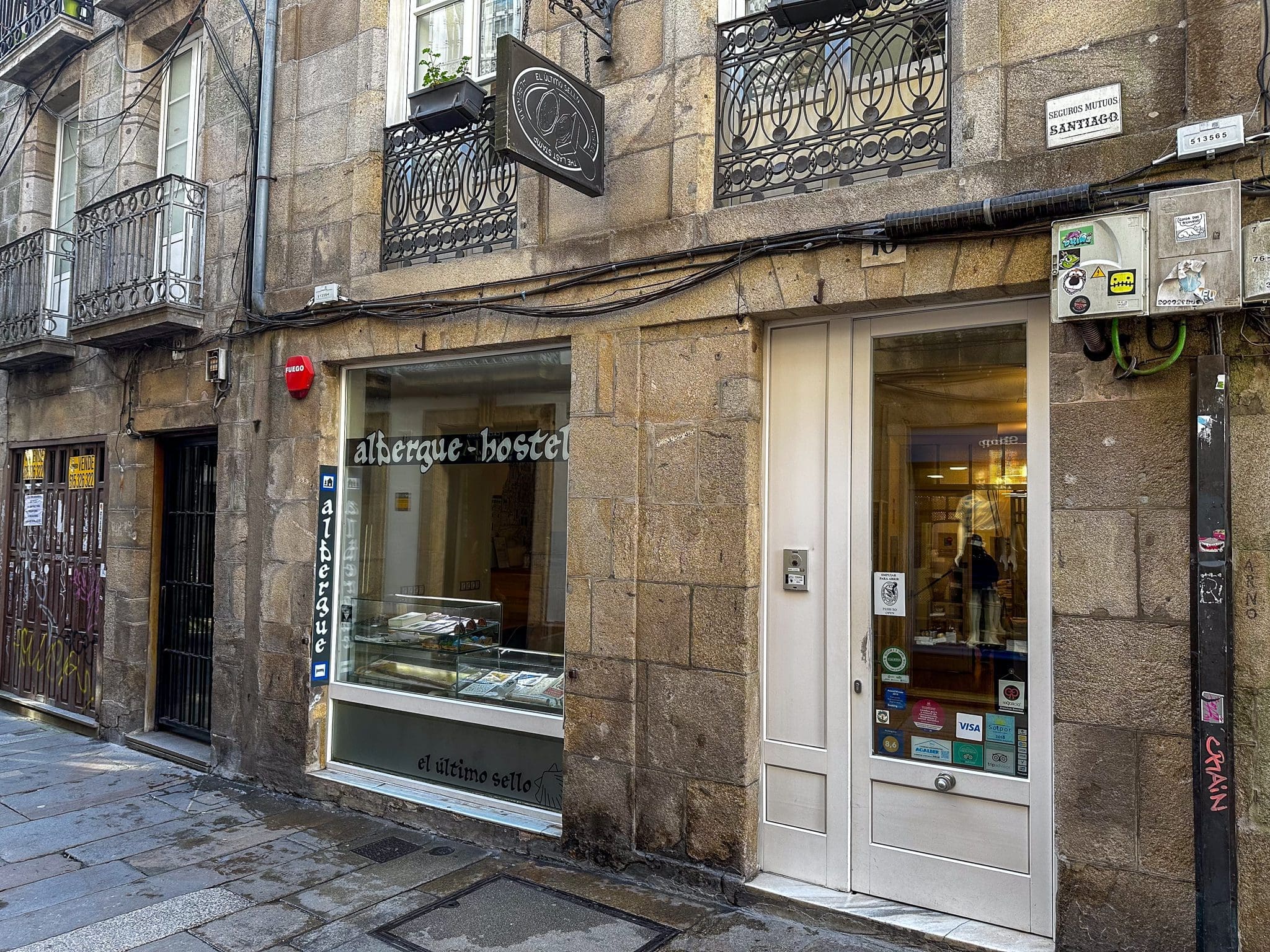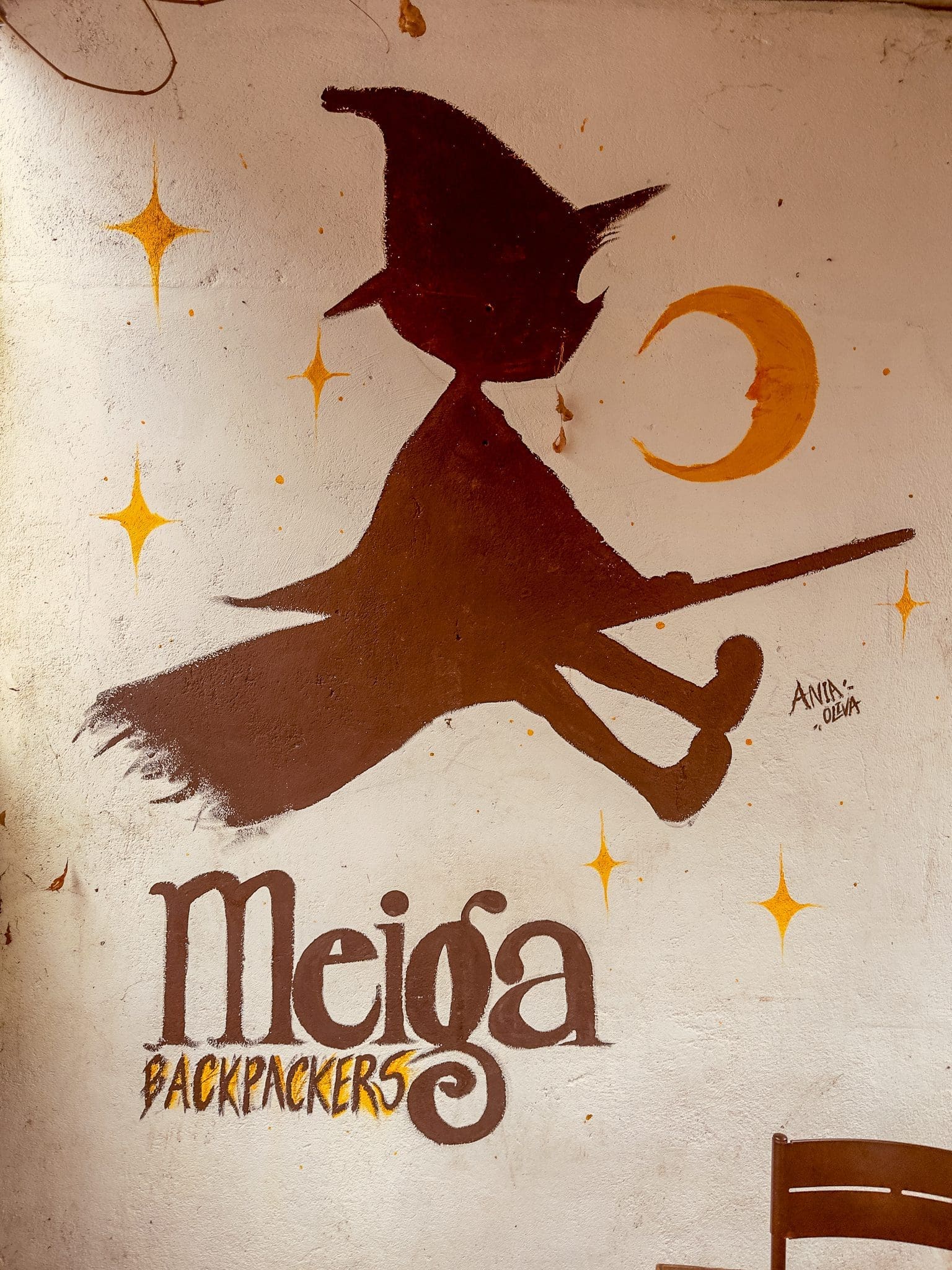Section 10
Sarria to Santiago
The final 113 kilometres from Sarria to Santiago wind through shady woods, past stone-walled farms, and tiny Galician villages where cows often have more right to the road than you do. Some days, it feels more like walking in Ireland or Scotland than it does Spain.
From here, it also gets super busy, with loads of new pilgrims starting in Sarria, and the whole atmosphere shifts — not in a bad or good way, it’s just different, as you share the path with so many people from all over the world. There is a real buzz in the air as you get closer to Santiago; the towns start getting bigger, and the kilometre markers seem to fall faster with every step as you make that final push towards the city and the finish line at the cathedral. If the busyness gets a bit much for you, you can also avoid this last stretch by entering Santiago on the Camino Invierno — here’s my guide to how to connect the two Caminos just after Samos.

Sarria
113.8 KM to Santiago
Leaving Sarria, the Camino Francés dips straight into classic Galician countryside. You’ll head downhill through the old quarter, past narrow stone lanes, a small chapel or two, and out over the railway line.


Very quickly, you’re back in nature—oak forests, moss-covered walls, and rolling farmland. The path undulates gently, crossing tiny hamlets where time seems to have paused. You’ll pass chestnut trees, bubbling streams, and plenty of roadside crosses.
Barbadelo
110.0 KM to Santiago
Roughly 4 km after leaving Sarria, you’ll come to the tiny hamlet of Barbadelo, where there’s a tremendous little 12th-century Romanesque church. It pops up in the old Codex Calixtinus and is worth a look.
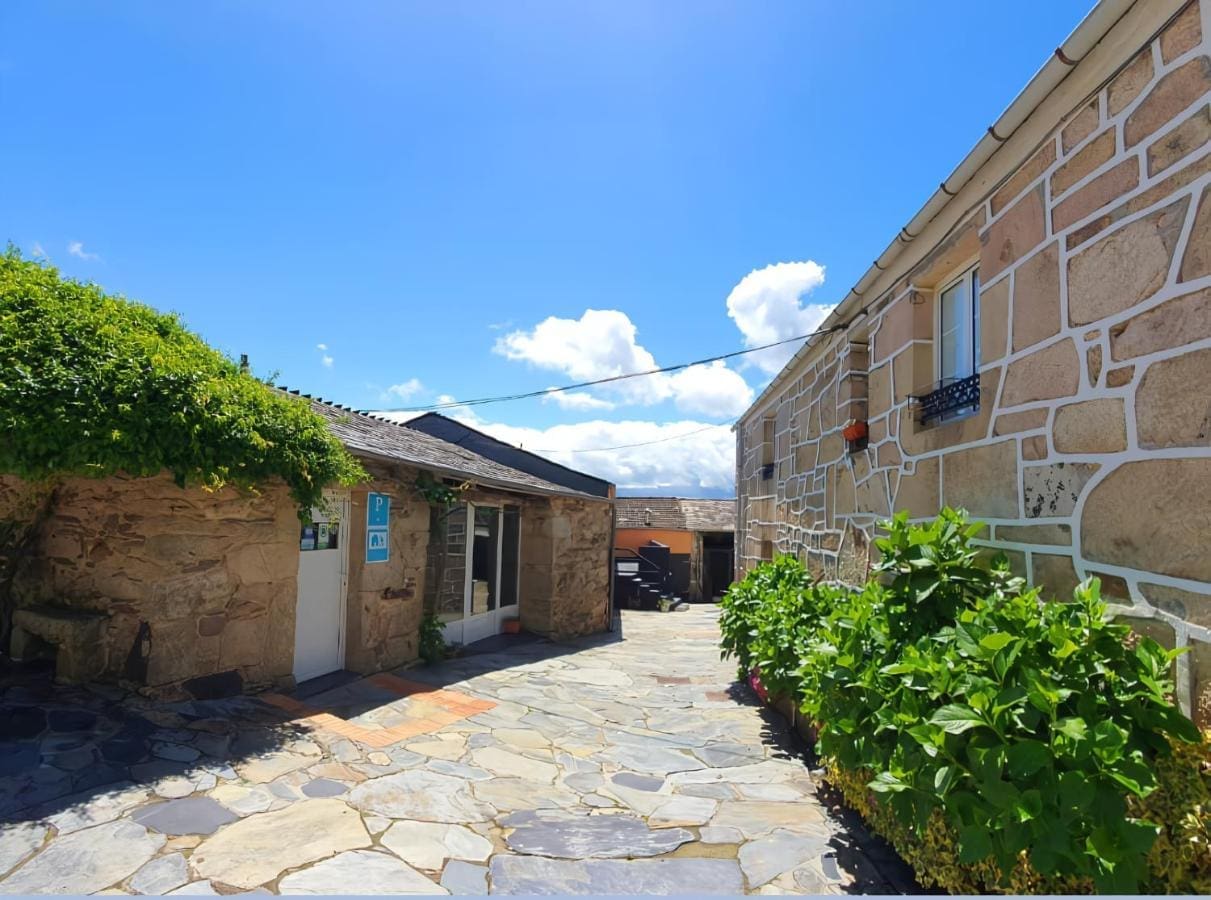

There are a few albergues in the village, and it’s a really peaceful place to stay if Sarria is just too busy for you. I would recommend A Casa de Carmen, run by two kind Italian pilgrims
Morgade
101.6 KM to Santiago
Continue through small hamlets for 8 km to Morgade, which is little more than a bend in the road—just a single albergue and a stone marker showing you’re now under 100km from Santiago. But despite its size, it’s a memorable stop.
This albergue’s a bit special. It’s got a proper restaurant where the food actually feels homemade, and the place is modern and comfy. Out front, there’s a little café with outdoor seating—perfect if you just want to sit for a bit with a café con leche and watch the pilgrims go by.

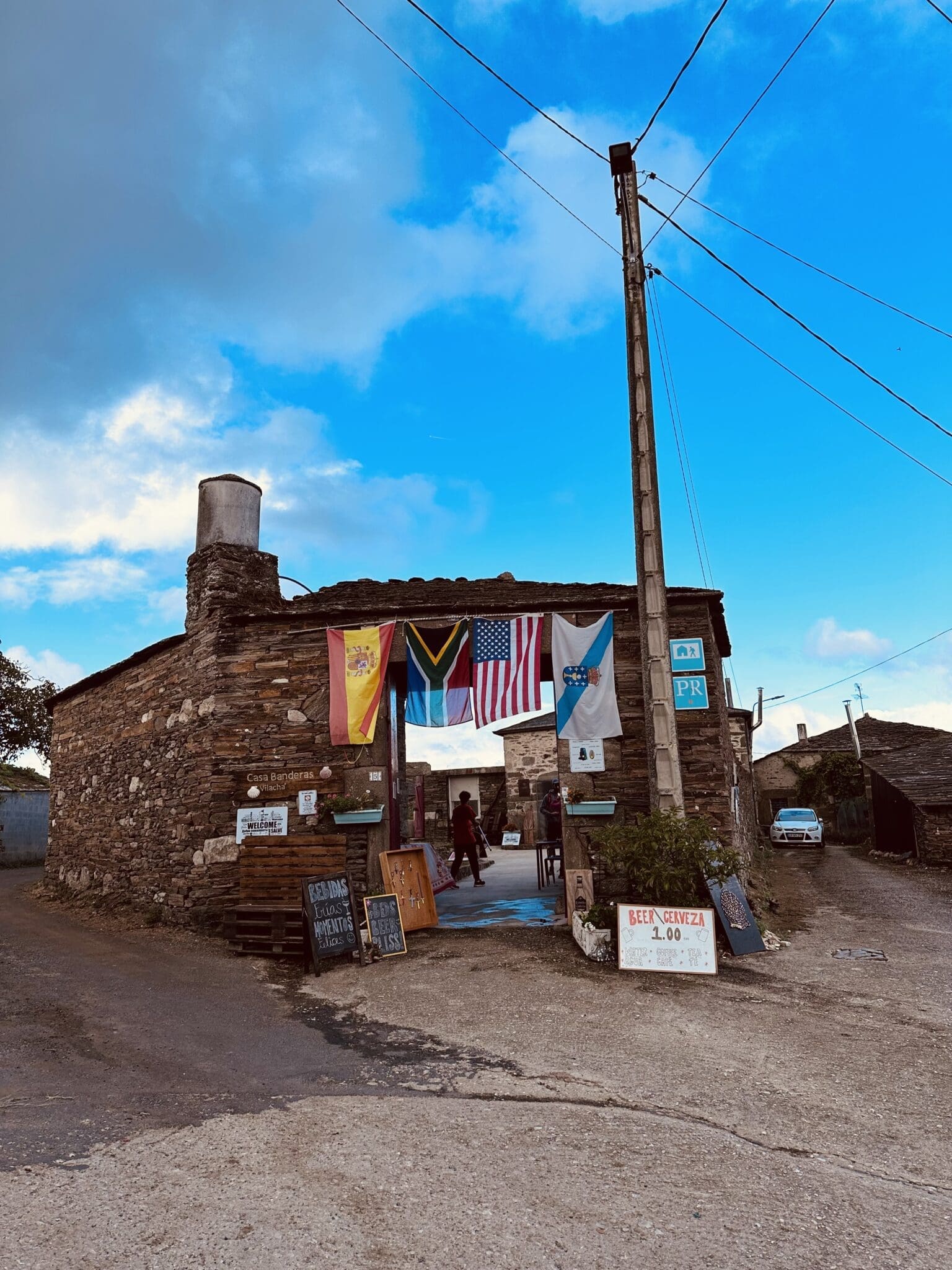
Portomarín
91.7 KM to Santiago
The walk to Portomarín is about 10 km and mostly gentle, weaving through forests and farmland. As you get closer, the path starts to descend toward the Miño River, and you’ll see Portomarín sitting up on a hill across the valley.
To get there, you’ll cross a long, high bridge over the reservoir—fair warning if you’ve got a fear of heights, it’s not for the faint-hearted. The view’s impressive though, especially on a clear day.


The town itself has an unusual story. The original village was down in the valley, but back in the 1960s, they dammed the river to create the reservoir. So they moved the whole town uphill—stone by stone in the case of the church, which was rebuilt exactly as it was. If the water level’s really low in summer, you can sometimes see the spire of the old church poking out of the reservoir as you cross the bridge. It’s eerie and fascinating.


Once you cross, there’s a bunch of stone steps to climb before you reach the town proper. Portomarín has a more modern feel than many Camino towns—almost like a resort that just happens to have the Camino running through it. Not in a bad way, just a different vibe. It’s got everything you need though, and you’re spoiled for food options.
Gonzar
84.2 KM to Santiago
The stretch from Portomarín to Gonzar is a steady climb, especially in the first few kilometres as you leave town and head uphill along a quiet road.
You will start to see loads of hórreos from here—these long, narrow stone or wooden structures on stilts that look like little houses on legs, in every garden. The first time I saw one, someone told me they were used to bury the dead, and I, horrified but gullible, believed it. They’re actually for storing grain, keeping it dry and safe from rodents.

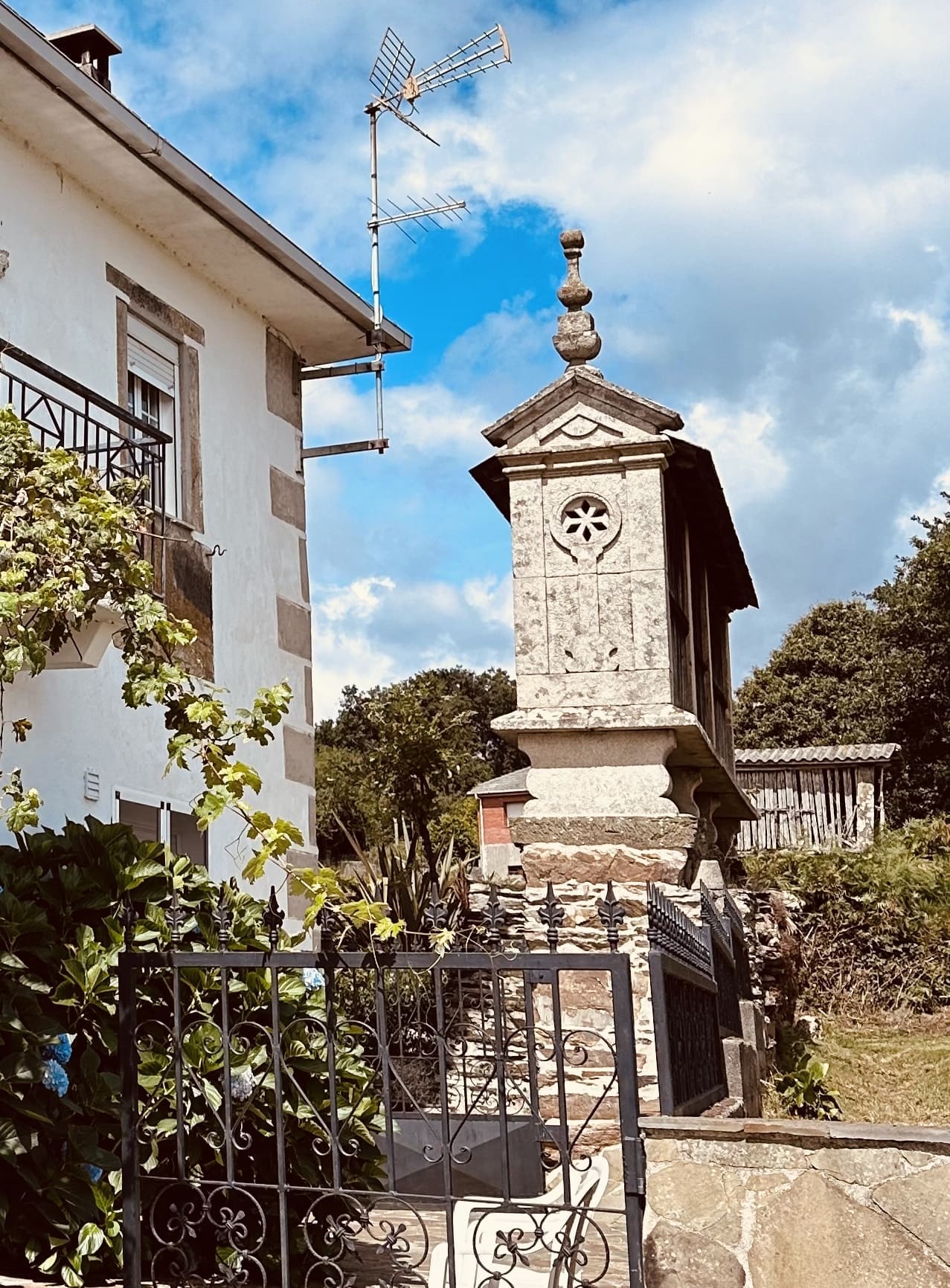
The village itself of Gonzar is tiny—more a scattering of houses than a town—but it has a decent albergue and a bar where you can grab a bite. Not a headline stop, but a solid place to break for the night or just catch your breath before the next leg.
Castromayor
82.9 KM to Santiago
Before long, you’ll arrive in Castromayor, another tiny hamlet with just a handful of buildings and a small albergue.

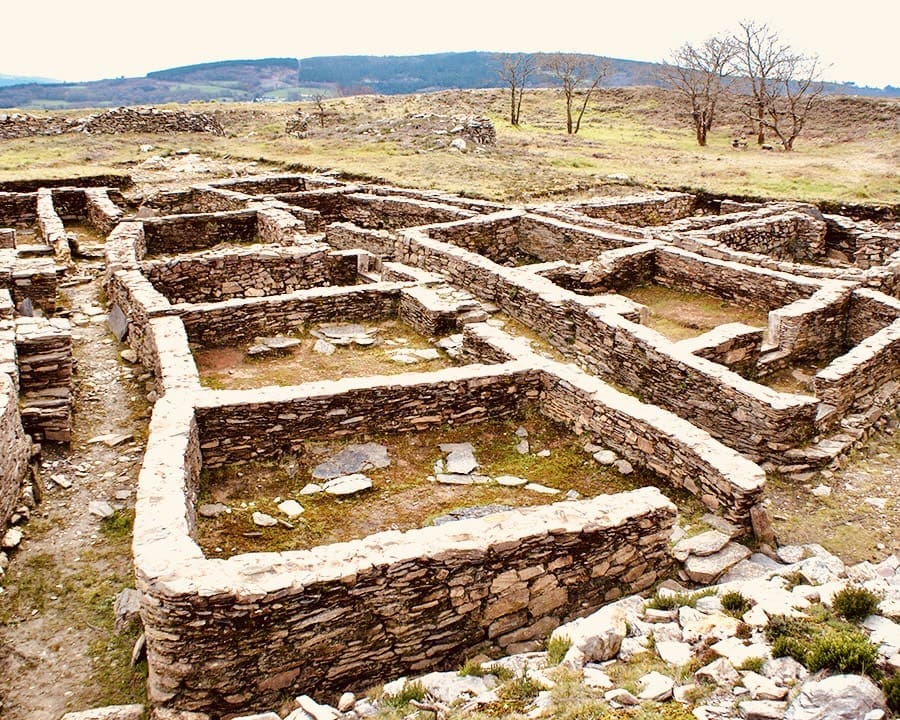
Just past the village of Castromaior, about 50 metres off the Camino to your left, you’ll find the ruins of the Castro de Castromaior—an ancient Iron Age hillfort that gave the village its name. Most pilgrims walk right past it without knowing it’s there—there are no signs, and it’s tucked just out of view before you hit the main road.
The ruins date back to the 4th century BC. It’s one of the most important Iron Age sites in northwest Spain. You’ll see concentric stone walls, the remains of old houses, and narrow little lanes where people once lived over 2,000 years ago. The entire site spans approximately five hectares, definitely worth the quick detour.
Palas de Rei
67.5 KM to Santiago
The walk from Castromayor to Palas de Rei is about 10 km and mostly gentle going. You’re properly into eucalyptus country now—tall trees lining the path, their scent in the air. You’ll pass through a few small hamlets like Portos, Lestedo, and Os Valos, with the usual mix of roadside cafés and a few sleepy houses.
Palas de Rei is a popular overnight stop, about 68 km from Santiago, and marks the beginning of the final three-day push for many walkers.

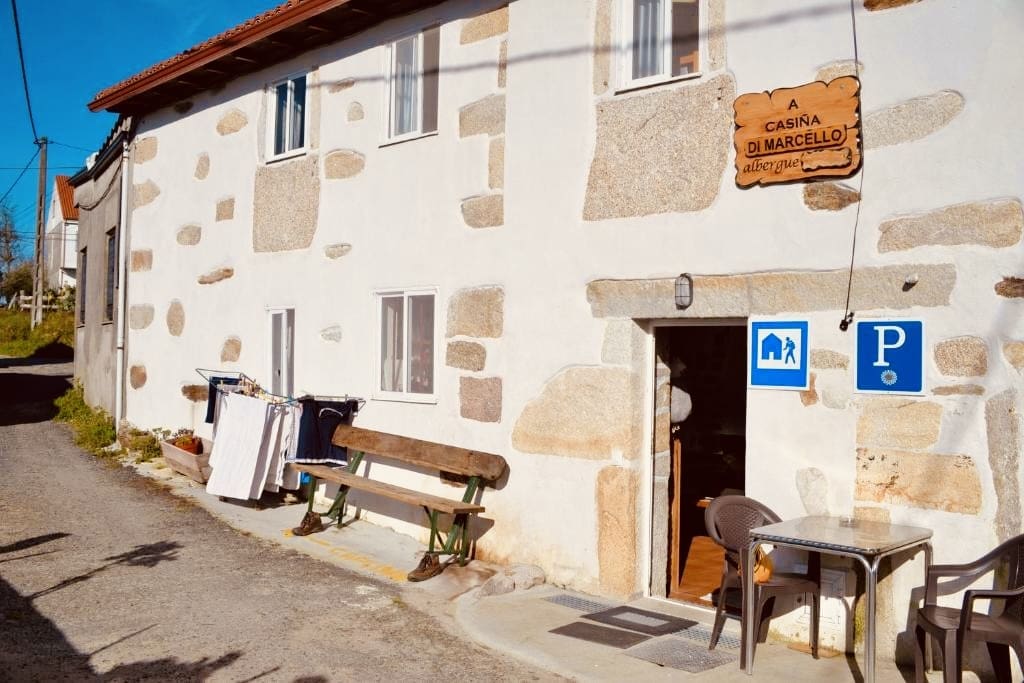
The town’s name comes from Pallatium Regis, or “Palace of the King,” supposedly linked to the Visigothic king Witiza, who ruled here in the 8th century. Today, it’s a small but bustling place with around 3,500 residents, and it’s well-stocked with albergues, cafés, pharmacies, and shops. It’s not the most atmospheric town on the Camino, but it’s got everything you need.
The Church of San Tirso, with its Romanesque doorway, is worth a visit. A few kilometres off the main route is the Church of Vilar de Donas—a stunning Romanesque church associated with the Knights of Santiago, featuring beautiful medieval frescoes.
If you’re up for a detour, Pambre Castle is about 6 km away. It’s one of the best-preserved medieval fortresses in Galicia and managed to survive the Irmandiño revolts of the 15th century.
Palas de Rei is also at the junction of the Camino Francés and the Camino Primitivo, so you’ll likely meet pilgrims from both routes. It’s a good place to rest, regroup, and maybe enjoy a decent meal before the next leg to Melide.
There are loads of places to stay in town, but my top pick is probably Albergue A Casina di Marcello. Marcello’s a pilgrim himself—he’s walked loads of Caminos and ended up settling here to run his own place. He cooked us an amazing Italian dinner, proper home-style stuff. Can’t recommend it enough.
Melide
52.7 KM to Santiago
The walk from Palas de Rei to Melide is about 15 km and takes you through rolling Galician countryside dotted with tiny hamlets, old stone bridges, and shaded woodland paths. It’s a really pretty stage—one of the more charming sections of the final days.
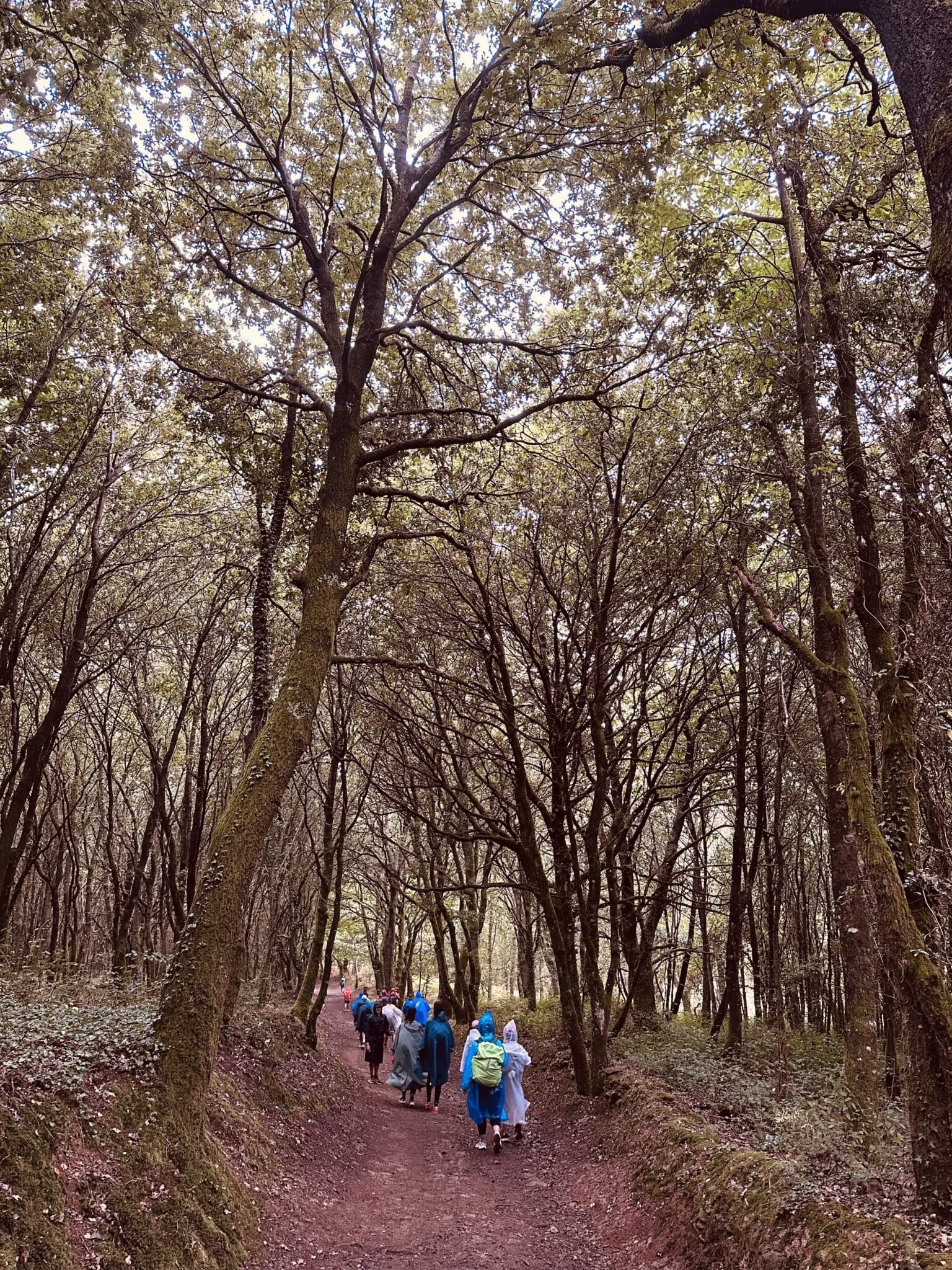

You’ll pass through villages like San Xulián, Casanova, and Leboreiro. There’s also a beautiful old bridge at Furelos—just before Melide.
Melide a busy mid-sized is famous for one thing above all: pulpo (octopus). This is the place to try pulpo a la gallega—served with olive oil, salt, and paprika. Two legendary pulperías are Ezequiel and A Garnacha, both packed with pilgrims and locals.


Melide’s a good place to spend the night or at least stop for a really decent lunch.
Ribadiso
44.1 KM to Santiago
The walk from Melide to Ribadiso is around 13 km, the path continues through quiet forests, gentle hills, and more tiny Galician villages—you’ll pass places like Boente and Castañeda, where there’s usually a spot to grab a coffee or fresh juice.
Just after Boente, you’ll head down into a lush green valley and cross a small stone bridge over the Iso River. Right after that, you’ll see the albergue at Ribadiso, one of my favourites.

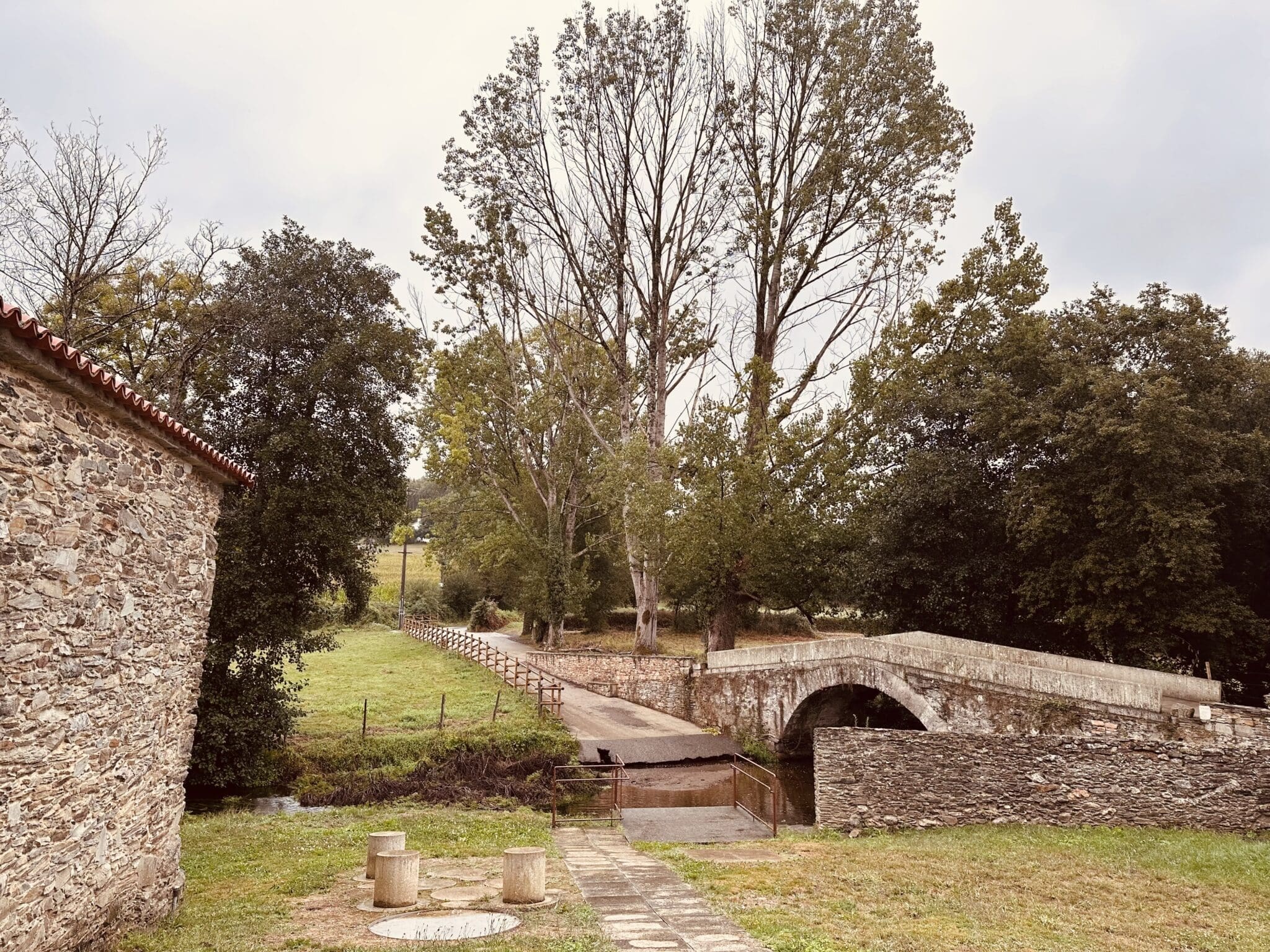
It’s set in an old stone building, a restored medieval pilgrims’ hospital, right by the river. The setting is really peaceful, with a little stream running past and fields all around.
Arzúa
38.5 KM to Santiago
The walk from Ribadiso to Arzúa is short—just about 3 km—but it’s mostly uphill, so you’ll feel it, especially if you’re hitting it first thing in the morning.

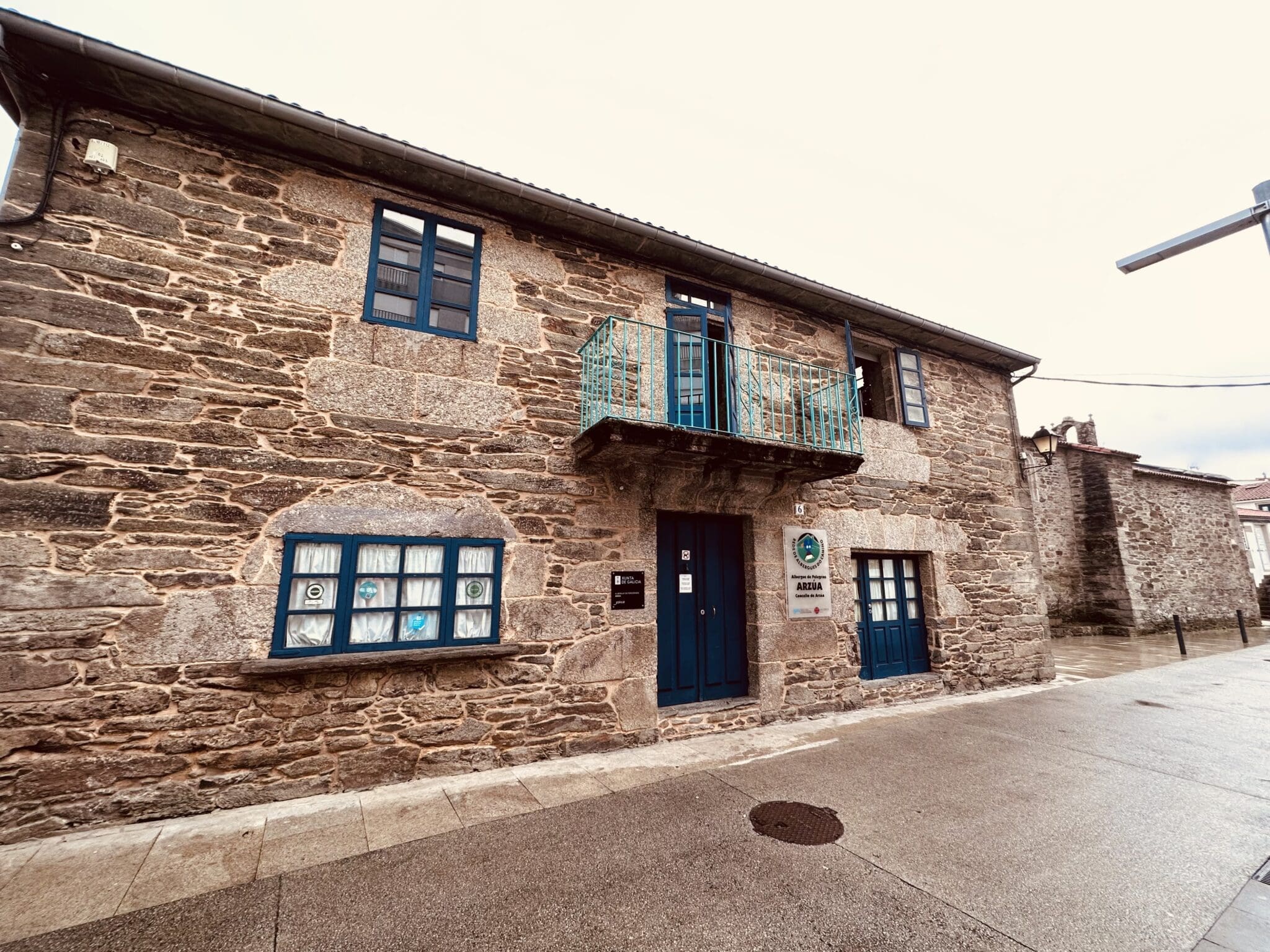
You leave Ribadiso by crossing another little stone bridge and then start the steady climb through trees and back onto quiet country roads. It’s not far, but it can feel longer with the hill and the morning legs.
Arzúa’s another bigger town, and the Camino goes right through the middle of it. It’s known for its local cheese—queso de Arzúa-Ulloa. It’s soft and mild, and you’ll often see it melted on toast or drizzled with honey.
A Rúa
21.0 KM to Santiago
The walk from Arzúa to A Rúa is about 19 km, and it’s a mix of forest paths and country lanes, with a few gentle ups and downs. It’s a peaceful stage, passing through hamlets like Pregontoño and Salceda—nothing major, but plenty of spots to stop for a coffee or a rest.

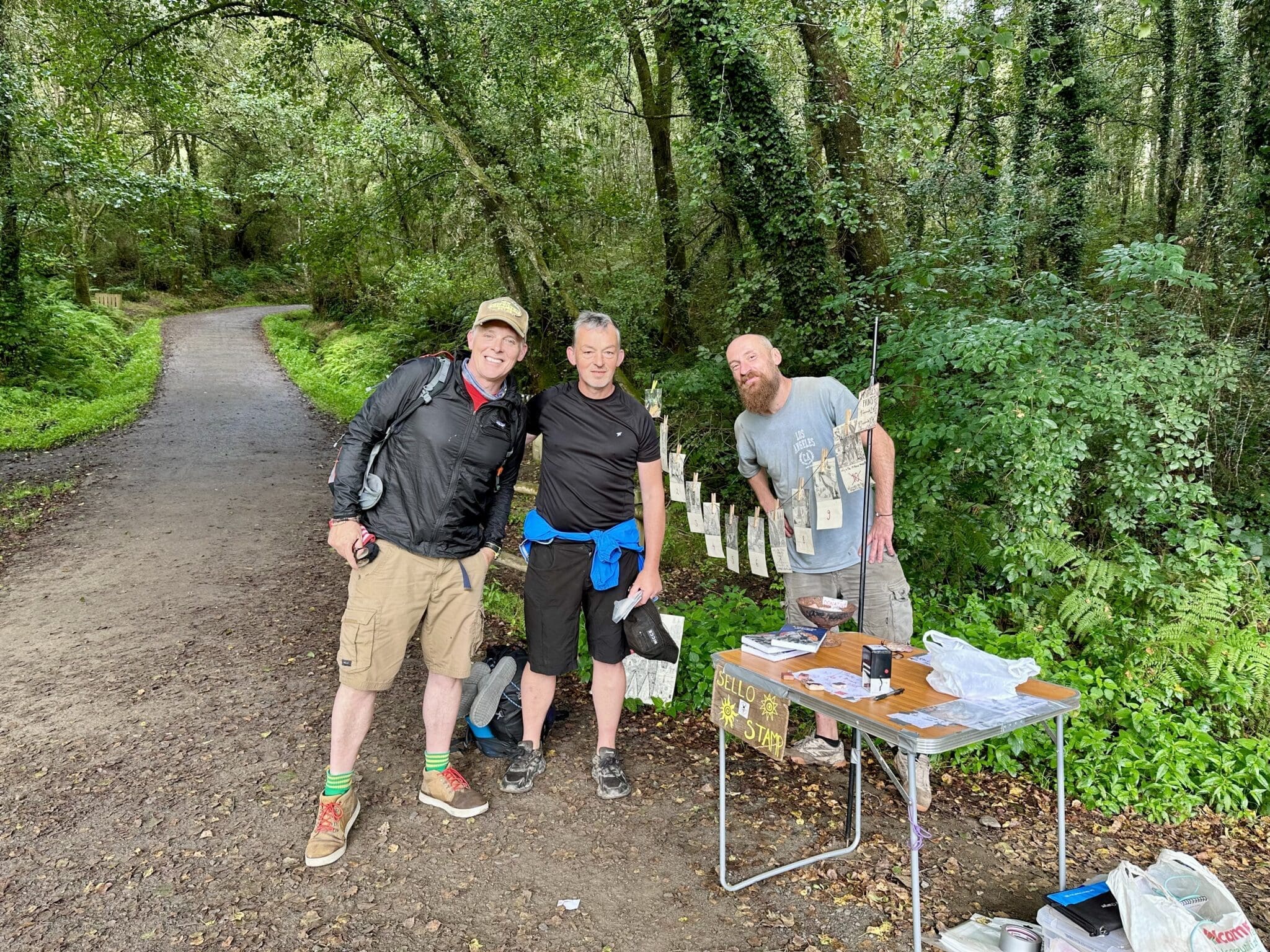
A Rúa itself is a small, quiet village—more a cluster of houses than a proper town—but it has a couple of good albergues, including Albergue O’Pazo and Albergue A Rúa. There are also a few bars and restaurants where you can get a decent meal.


It’s a great place to stop for the night if you want to break up the final stage into Santiago. Staying here means you’ve got just over 20 km left the next day—enough for a good final walk, but not too long. It also keeps you out of the busy crowds that start packing into O Pedrouzo. A calm last night on the Camino.
Santiago
0 KM to Santiago
The final walk from A Rúa to Santiago is just over 20 km, and it’s a mix of emotions—excitement, nerves, maybe a bit of sadness that it’s nearly over.


The path takes you through more eucalyptus forests, country roads, and the usual scatter of small villages. You’ll pass through places like Amenal, San Paio, and Lavacolla (yep, that’s the spot where medieval pilgrims used to wash up before entering Santiago). There are a few hills, but nothing too brutal—just enough to remind your legs that they’ve done a lot of work.

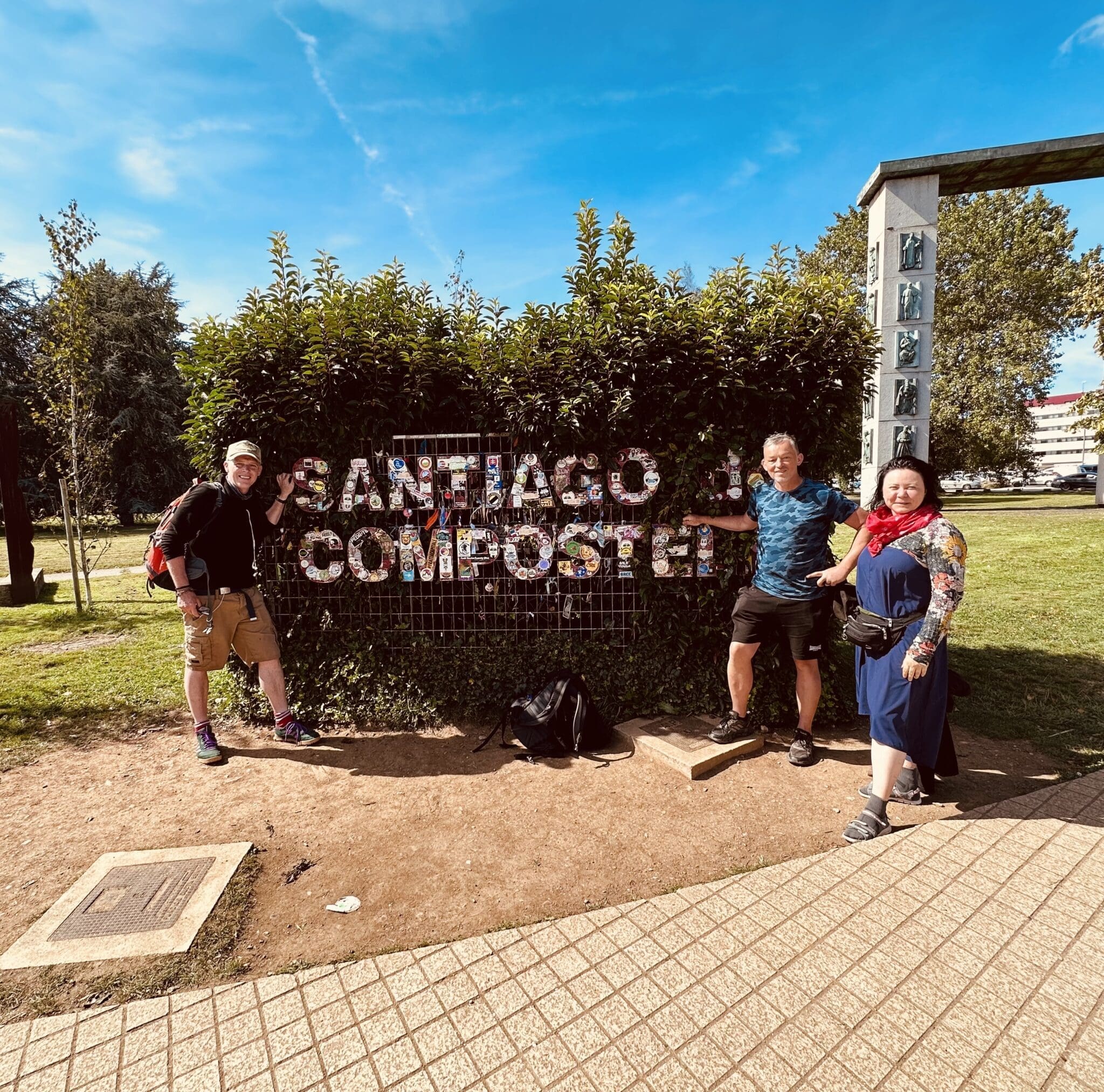
As you get closer, things start to feel more urban. The Camino winds through Santiago’s outskirts—past roundabouts, busy roads, and modern suburbs. Then you reach Monte do Gozo—“Mount Joy”—a small hill with sweeping views of the city. For many pilgrims, it’s where you catch your first glimpse of the cathedral towers. From there, it’s a steady walk downhill into the heart of Santiago.
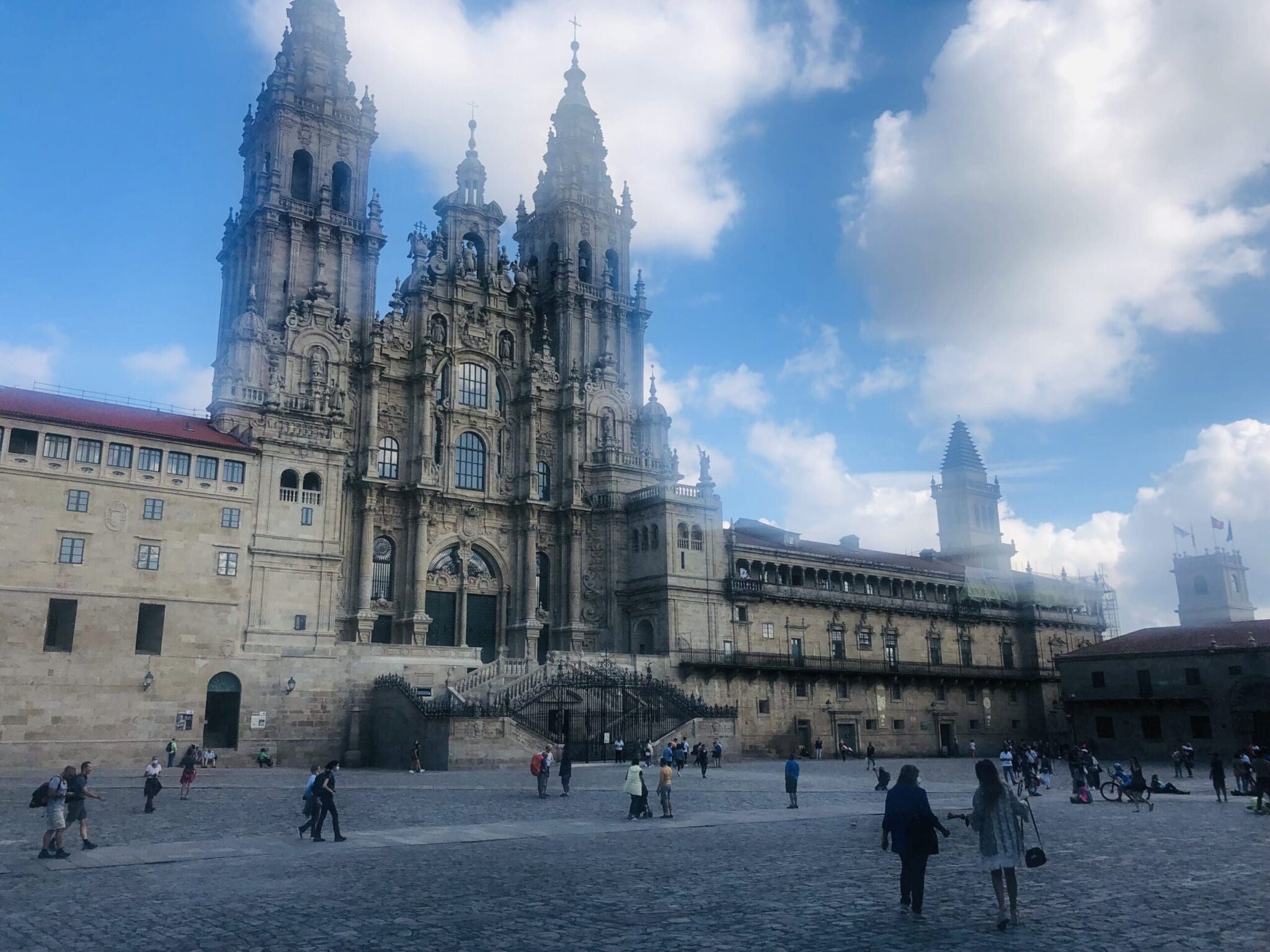

The last stretch through the city streets can feel a bit long, but suddenly you’re there—turning a corner into the Praza do Obradoiro, and there it is: the cathedral. The finish line. You made it.
